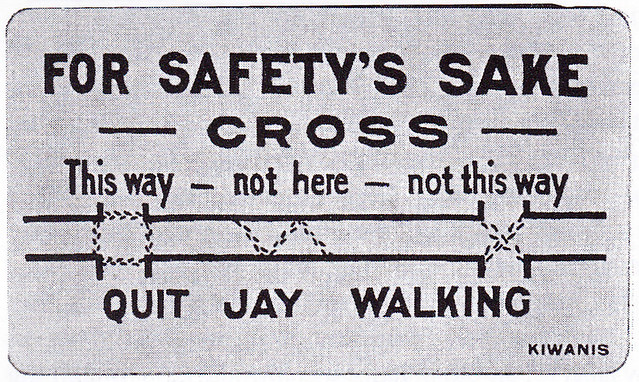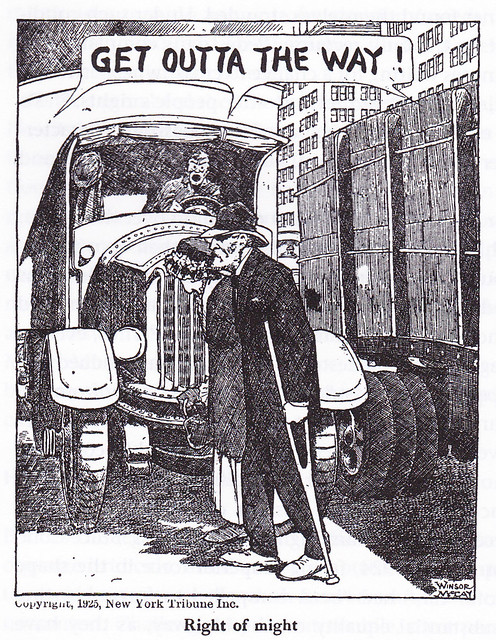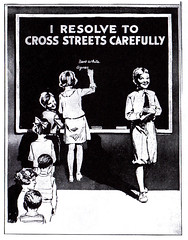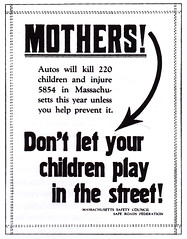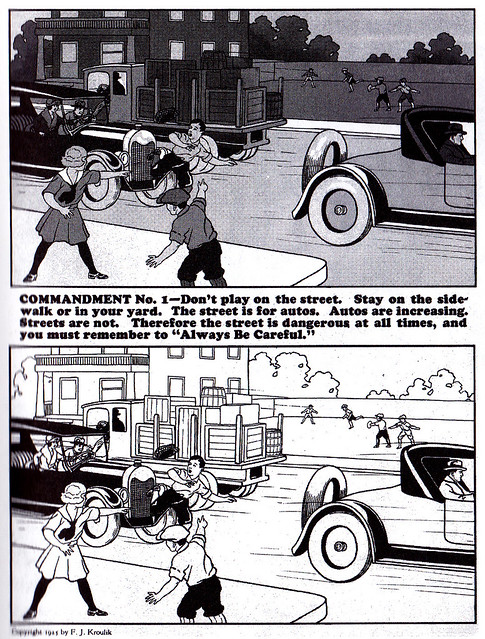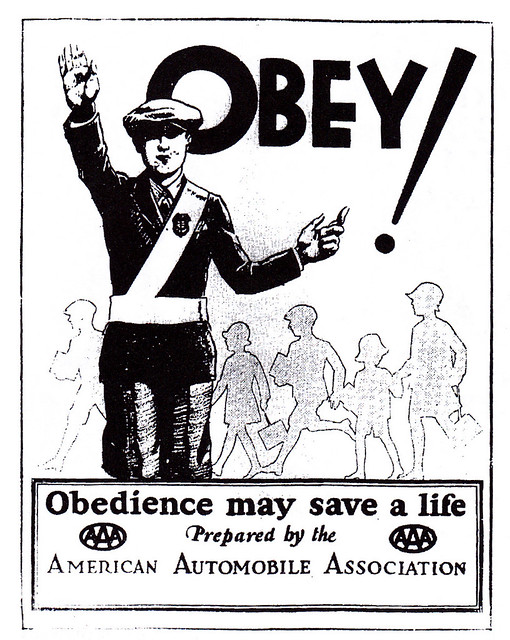

First reference to “jaywalking” - Kansas City Star, 30 April 1911.
I’ve posted about the brilliant book “Fighting Traffic - The Dawn of the Motor Age in the American City” by Peter D. Norton before but I just can’t get enough of it. Previous posts are The Anti-Automobile Age and what we can learn from it and Fighting Traffic.
The Canadian writer, Chris Turner, wrote today about how there are no jaywalkers on sustainable streets over at Mother Earth Network. Here’s some back-up for that brilliant article.
The very term “Motor Age” was invented by the automobile industry as a promotional term aimed at turning public opinion away from the massive societal protest at the appearance of cars on city streets.
The term “…carried a built-in justification for overturning established custom. It combined rhetorical closure and problem redefinition, just as similar phrases have been used in more recent years to justify workplace smoking bans, cleaner fuels and tightened security at airports.”
For 7000 years cities and their streets were places where citizens gathered, moved and played. The automobile industry were forced to use marketing techniques to win the battle for space for cars. They’ve never looked back. The cartoon at the top is the very first reference to another marketing tactic adopted by the automobile industry - jaywalking. A ‘jay’ was a synonym for a “country bumpkin” and pedestrians who dared to challenge 7000 years of city life were labelled as such. Crosswalks were invented to funnel pedestrians into controlled zones that would allow cars dominance over the streets. Traffic fatalities were a major problem when cars started to muscle onto the streets. Most traffic safety campaigns placed the responsibility firmly on the motorists and the protests against them were massive. The automobile industry needed to change this perception, and quick. They were successful.
“By 1930 the American Automobile Association had overtaken safety councils for leadership in school safety”.
Boy Scouts were enlisted by motorist organisations and Kiwanis clubs and they distributed cards to “reckless pedestrians” like this one from Hartford, Conneticut in 1921.
They would patrol the streets teaching the citizens the New Rules of the Motor Age. The signs, above, were sponsored by the Auto Club of Southern California in 1923.
This attitude, lampooned in the New York Herald Tribune in 1925, sounds awfully familiar to this day.
It wasn’t just jaywalking. Seven centuries of children playing in the streets had to be abolished as well. Drawing at left is from the Chicago Motor Club, a safety poster for their Textbook for Schools in 1932. At right is a campaign from the Massachussets Safety Council in 1923.
A 1924 song “Beware Little Children” hammered home the auto-centric message to kids and parents. Mostly the parents, of course.
The message is clear in this 1927 poster from the American Automobile Association. Obey. The policeman? Oh, sure. The Automobile Association? Most definately.
“Of course not! The streets are for cars!” Seven thousand years - a little brainfart lasting 100 years. Hasn’t worked out. Can we have our streets back please?
